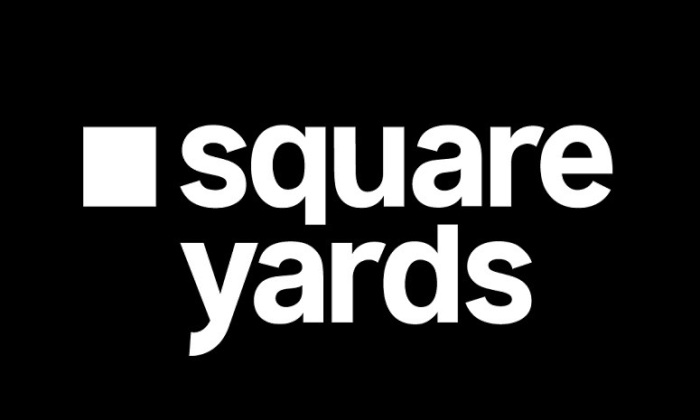Understanding real estate can sometimes feel overwhelming, with so many terms, measurements, and concepts to consider. One of these measurements you might have come across is the square yard. This article unpacks what a square yard is, why it matters in real estate, how to use it, and its relevance worldwide. Whether you’re a prospective homeowner, a real estate enthusiast, or a professional in the industry, this guide will provide clarity and practical insights into this critical unit of land measurement.

What Is a Square Yard?
At its core, a square yard is a unit of area measurement used globally in various contexts, most notably in real estate, construction, and textile industries. A square yard can be visualized as the area of a square with sides measuring one yard (3 feet or 36 inches) in length.
A Quick Calculation
To put it into simple terms:
- 1 square yard = 3 feet x 3 feet = 9 square feet
- It can also be expressed in other measurement units:
- 1 square yard = 0.836127 square meters
- 1 square yard = 1296 square inches
Despite the growing adoption of the metric system, the square yard is still widely used in many countries, particularly in the United States, Canada, and parts of Asia.
Historical Context
The use of the square yard dates back centuries, particularly in the era when the imperial system was commonly used in Britain and its colonies. Over time, this unit became entrenched in many local real estate markets as a standard for measuring land and space.
Why Is the Square Yard Important in Real Estate?
The square yard plays a pivotal role in real estate transactions, especially when determining land area, the price per unit, or comparing properties. Here are a few reasons why it’s a critical measurement:
1. Ease of Land Measurement
The compact nature of the square yard makes it an efficient and digestible unit for marking out medium-sized plots. For instance, in urban areas where space is limited, properties are often measured in square yards for easier comprehension.
2. Standardization Across Markets
Many real estate markets, especially in countries like India, Pakistan, and the UK, heavily rely on square yards for consistency. Buyers, sellers, and agents often discuss area sizes using this unit, making it a universal reference point within these markets.
3. Accurate Pricing
Property rates are often quoted on a per-square-yard basis, particularly in countries where this unit is preferred. For example:
- A plot of 200 square yards priced at $250 per square yard would cost $50,000 in total.
4. Practical Comparisons
The square yard enables straightforward comparisons between properties of various sizes, whether it’s a residential plot, a piece of commercial real estate, or a strip of agricultural land.
How to Convert Square Yards to Other Units
Since the square yard isn’t used universally across all regions, you might find yourself needing conversions. Below are some essential conversions:
- Square yards to square feet:
Multiply the number of square yards by 9
Example: 10 square yards = 10 x 9 = 90 square feet
- Square yards to square meters:
Multiply the number of square yards by 0.836127
Example: 50 square yards = 50 x 0.836127 = 41.80635 square meters
- Square yards to acres:
- acre = 4,840 square yards. Divide the number of square yards by 4,840.
Example: 10,000 square yards ÷ 4,840 = approximately 2.07 acres
These conversions are particularly useful when dealing with international real estate transactions or comparing properties listed in different systems.
Real-Life Examples of Square Yard Usage
To provide a practical perspective, here are a few real-world scenarios where understanding square yards is essential:
- Residential Land Purchases in India
A common plot size in urban India is 300 square yards, often used in city planning and housing developments. Buyers typically evaluate these dimensions when choosing properties.
- Real Estate Listings in the US
Many listings for suburban homes in the United States use square yards to describe backyard or garden areas, such as “a 50-square-yard patio space.”
- Commercial Properties in Pakistan
Retail spaces in marketplaces and shopping centers are usually sold or leased based on square yard area measurements.
Using a universal unit like the square yard ensures clarity and helps establish fair market comparisons across different regions.
Benefits of Understanding Square Yard Measurement
1. Better Decision-Making
Whether buying, selling, or renting a property, knowing how to interpret measurements in square yards helps buyers and sellers accurately assess value for money.
2. Enhanced Negotiation
Understanding size calculations in square yards allows you to negotiate more effectively, especially when property prices are listed as “per square yard.”
3. Global Relevance
If you’re working in international real estate or considering properties abroad, understanding unit conversions can make you a more informed investor or real estate professional.
Square Yards Enhancing Global Real Estate
The square yard is more than just an area measurement; it’s a bridge between buyers, sellers, and real estate experts worldwide. By understanding its utility and relevance, you can confidently engage with the dynamic world of property investment and management. Whether purchasing a cozy home, managing a construction project, or planning a commercial complex, the universal application of square yards lends clarity to every transaction.
Take the time to familiarize yourself with these measurements, their conversions, and their real-world applications. Doing so will not only save you time and effort but also empower you to secure the best deal in today’s competitive real estate market.